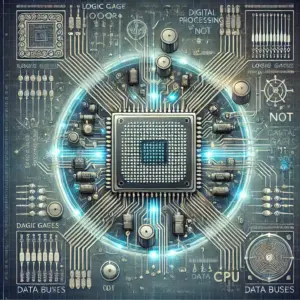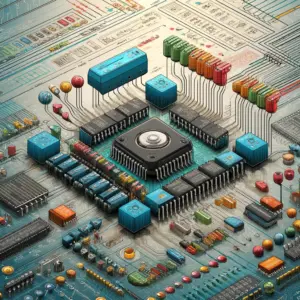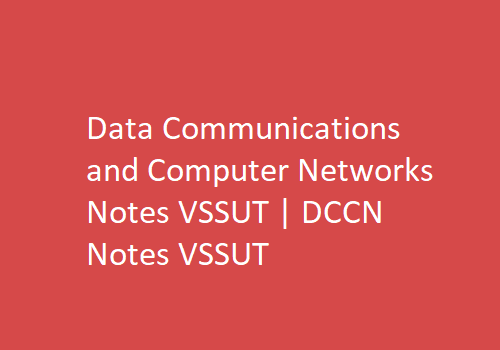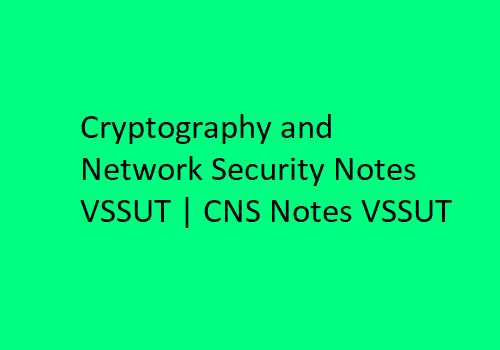DLD&CO Notes pdf – Digital Logic Design & Computer Organization Notes pdf – file
Complete Notes
Unit 1
Unit 2
Unit 3
Unit 4
Unit 5
Note :- These notes are according to the R09 Syllabus book of JNTU. In R13 and R15,8-units of R09 syllabus are combined into 5-units in R13 and R15 syllabus. If you have any doubts please refer to the JNTU Syllabus Book.
Digital Logic Design & Computer Organization Notes, PDF | DLD&CO B. Tech (2025)
Description
Digital Logic Design & Computer Organization Notes is a fundamental subject in the B. Tech curriculum that bridges the gap between theoretical computer science and practical computing. It provides an in-depth understanding of how digital systems operate and how computer hardware is organized and designed. This course is essential for students aspiring to excel in computer engineering and related fields.
The following notes are aligned with the R09 syllabus of JNTU, combining 8 units into 5 units for the R13 and R15 syllabus. These notes serve as a comprehensive resource for students, offering clear and concise explanations of complex topics, and are available for free download.

Overview of DLD&CO Notes Pdf
The Digital Logic Design & Computer Organization Notes PDF is designed to provide students with a comprehensive understanding of the fundamental principles and practical applications of digital logic and computer organization. These notes cover essential topics such as the basic structure of computers, digital logic circuits, memory organization, and input/output operations. The content is structured to align with the university syllabus, ensuring that students have access to all the necessary information for success in their studies.
The Following Topics Are Covered in Digital Logic Design & Computer Organization Handwritten Notes
Unit 1: Basic Structure of Computers
- Functional Units: Learn about the key components of a computer system, including the central processing unit (CPU), memory, input/output devices, and buses. These components work together to execute instructions and process data, forming the backbone of computer architecture.
- Basic Operational Concepts: Understand the fundamental concepts of computer operation, including instruction execution, data processing, and memory management. This section covers the instruction cycle and the steps involved in executing a program.
- Bus Structures: Explore the role of buses in computer systems, which facilitate data transfer between the CPU, memory, and peripheral devices. This section covers different types of bus structures, including data, address, and control buses.
- Software Performance: Discover how software performance is influenced by hardware design, algorithm efficiency, and system architecture. Understanding these factors is crucial for developing efficient software that maximizes hardware capabilities.
- Multiprocessors and Multi computers: Learn about the architecture and advantages of multiprocessor and multicomputer systems, which enable parallel processing and distributed computing. These systems are increasingly important in modern computing for handling large-scale data and complex computations.
- Computer Generations: Explore the evolution of computer technology through different generations, from early mechanical devices to modern electronic computers. Each generation is characterized by significant advancements in hardware and software, leading to increased performance and capabilities.
- Data Representation: Understand how data is represented in computers using binary, octal, and hexadecimal number systems. This section covers both fixed-point and floating-point representation, which are essential for accurate data processing and computation.
- Computer Types: Discover the different types of computers, including personal computers, workstations, enterprise systems, and supercomputers. Each type has its own unique features and applications, catering to different computing needs and environments.
- Input and Output Units: Learn about the functions of input and output units, which facilitate communication between the computer and the outside world. This section covers the various input and output devices, their characteristics, and their roles in data processing.
Unit 2: Digital Logic Circuits-I
- Basic Logic Functions: Explore the fundamental logic functions that form the basis of digital circuits, including AND, OR, NOT, NAND, NOR, XOR, and XNOR gates. These functions are used to perform logical operations on binary data.
- Boolean Algebra: Understand the principles of Boolean algebra, which provides a mathematical framework for analyzing and designing digital circuits. This section covers the basic identities and laws of Boolean algebra, including De Morgan’ s Theorems and minimization techniques.
- Karnaugh Map Simplification: Learn how to simplify Boolean functions using Karnaugh maps, a visual method for minimizing logic expressions. This technique reduces the complexity of digital circuits, improving their performance and efficiency.
- Flip-Flops: Discover the role of flip-flops in digital circuits, which are used to store and manipulate binary data. This section covers different types of flip-flops, including D, T, JK, and SR flip-flops, and their applications in sequential circuits.
- Combinational and Sequential Circuits: Explore the differences between combinational and sequential circuits, which form the basis of digital system design. Combinational circuits perform operations based solely on current inputs, while sequential circuits depend on both current and previous inputs.
Unit 3: Algorithms for Fixed Point and Floating Point Operations
- Fixed Point Addition and Subtraction: Learn about algorithms for performing fixed-point arithmetic operations, including addition and subtraction. This section covers the principles of binary arithmetic and techniques for handling overflow and underflow conditions.
- Floating Point Addition and Subtraction: Discover algorithms for floating-point arithmetic, which allow for precise representation and manipulation of real numbers. This section covers the IEEE standards for floating-point arithmetic and the challenges of precision and rounding errors.
- Multiplication and Division Operations: Understand the algorithms for performing multiplication and division in both fixed-point and floating-point formats. This section covers hardware implementations and techniques for optimizing arithmetic operations.
- High Performance Arithmetic: Explore advanced techniques for enhancing the performance of arithmetic operations, including parallel processing and pipelining. These techniques are essential for achieving high-speed computation in modern computer systems.
- Instruction Set & Addressing: Learn about instruction set architecture (ISA) and addressing modes, which define the set of operations a computer can perform and how it accesses memory. This section covers different types of instructions and addressing techniques used in modern processors.
- Memory Locations and Addresses: Understand how memory is organized and accessed in a computer system, including the concepts of memory addresses, address space, and memory operations. This section covers techniques for efficient memory management and data retrieval.
- Register Transfer Notation: Discover the use of register transfer notation (RTN) in describing the operations and data flow within a computer system. This section covers the principles of RTN and its application in instruction design and analysis.
Unit 4: Memory Organization
- Concept of Memory: Explore the fundamental concepts of computer memory, including its organization, hierarchy, and management. This section covers different types of memory, including primary and secondary storage, and their roles in data processing.
- RAM and ROM Memories: Learn about the differences between RAM (Random Access Memory) and ROM (Read-Only Memory), which are used for temporary and permanent data storage, respectively. This section covers the characteristics and applications of each type of memory.
- Memory Hierarchy: Understand the organization of memory in a hierarchical structure, from cache and main memory to secondary storage. This hierarchy is designed to optimize speed and efficiency, with faster, smaller memory at the top and larger, slower memory at the bottom.
- Cache Memory: Discover the role of cache memory in improving system performance by storing frequently accessed data closer to the CPU. This section covers the principles of cache organization, mapping techniques, and performance metrics.
- Secondary Storage: Explore the characteristics and applications of secondary storage devices, including hard drives, solid-state drives, and optical discs. This section covers the principles of data storage, retrieval, and management on secondary storage.
- Memory Management Requirements: Learn about the requirements and techniques for efficient memory management, including allocation, deallocation, and protection of memory resources. This section covers the challenges and strategies for optimizing memory usage and performance.
Unit 5: Input/Output Organization
- Introduction to I/O: Understand the role of input/output operations in computer systems, which facilitate communication between the CPU, memory, and peripheral devices. This section covers the principles of I/O organization and management.
- Interrupts and Hardware: Explore the role of interrupts in managing I/O operations, including enabling and disabling interrupts, handling multiple devices, and interrupt nesting. This section covers the hardware and software mechanisms for managing interrupts and ensuring efficient data transfer.
- Direct Memory Access (DMA): Discover the concept of direct memory access, which allows peripheral devices to transfer data directly to and from memory without CPU intervention. This section covers the principles of DMA operation and its impact on system performance.
- Buses and Interface Circuits: Learn about the role of buses and interface circuits in facilitating communication between the CPU, memory, and peripheral devices. This section covers different types of buses, including PCI and USB, and their applications in modern computer systems.
- Universal Serial Bus (USB): Explore the features and applications of the Universal Serial Bus, a widely used interface for connecting peripheral devices to computers. This section covers the principles of USB communication, data transfer, and device configuration.
- Standard I/O Interfaces: Discover the characteristics and limitations of standard I/O interfaces, which facilitate communication between the CPU and peripheral devices. This section covers the principles of port design, device characteristics, and plug-and-play functionality.
Links to Download DLD&CO Notes Pdf
- Complete Notes: Download Complete Notes
- Unit 1 Notes: Download Unit 1 Notes
- Unit 2 Notes: Download Unit 2 Notes
- Unit 3 Notes: Download Unit 3 Notes
- Unit 4 Notes: Download Unit 4 Notes
- Unit 5 Notes: Download Unit 5 Notes
DLD&CO Notes and Study Material PDF Free Download
Access the complete set of Digital Logic Design & Computer Organization Notes PDFs through the provided links. These notes offer a detailed exploration of the syllabus, structured to enhance learning and retention for B.Tech students.
Topics Covered in this DLD&CO Notes Pdf
- Basic Structure of Computers: Understanding the architecture and operational concepts.
- Digital Logic Circuits-I: Insight into Boolean algebra, logic functions, and circuit design.
- Algorithms for Fixed Point and Floating-Point Operations: Techniques for arithmetic operations.
- Memory Organization: Concepts of memory hierarchy and management.
- Input/Output Organization: Principles of I/O management and device communication.
DLD&CO Notes Pdf from JNTU
These notes are tailored according to the JNTU syllabus, providing a robust framework for mastering Digital Logic Design & Computer Organization. With clear explanations and organized content, these notes are an essential resource for students aiming for academic success.
Always Choose Smartzworld to Download DLD&CO Notes PDF
Smartzworld provides reliable and easy access to high-quality notes and study materials. Ensure you are equipped with the best resources by choosing Smartzworld for your DLD&CO notes.
DOWNLOAD NOW
Benefits of FREE DLD&CO Handwritten Notes PDF
- Comprehensive Coverage: Detailed explanations of all topics in the syllabus.
- Easy to Understand: Simplified language and organized structure.
- Free Access: Available at no cost to support student learning.
- Handwritten Quality: Clear, concise notes that facilitate quick revision.

Frequently Asked Questions
Q1: Where can I download the Digital Logic Design & Computer Organization Notes Pdf?
- You can download the notes from the provided links for each unit or the complete set from Smartzworld.
Q2: How to download the Digital Logic Design & Computer Organization Notes Pdf?
- Click on the links provided above to download each unit’s notes or the complete set.
Q3: How many modules are covered in Digital Logic Design & Computer Organization Notes Pdf?
- The notes cover five comprehensive units, in line with the JNTU syllabus.
Q4: Topics Covered in Digital Logic Design & Computer Organization Notes Pdf?
- The topics include computer architecture, digital logic circuits, memory organization, and I/O management.
Q5: Where can I get the complete DLD&CO Handwritten Notes pdf FREE Download?
- The complete handwritten notes are available for free download through the provided links above.
Q6: How to download DLD&CO Handwritten Notes pdf?
- Access the links in this article to download the notes directly to your device.
Q7: How to Download FREE Digital Logic Design & Computer Organization Notes PDF?
- Visit Smartzworld and use the links provided to download your free DLD&CO notes.
Follow us on Facebook and Support us with your Like


